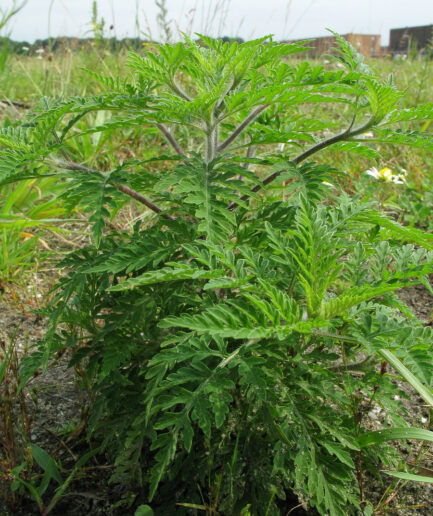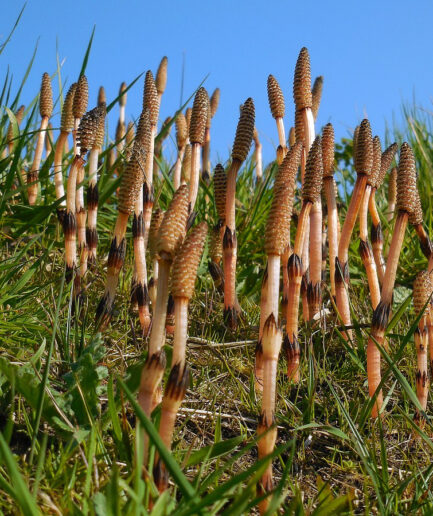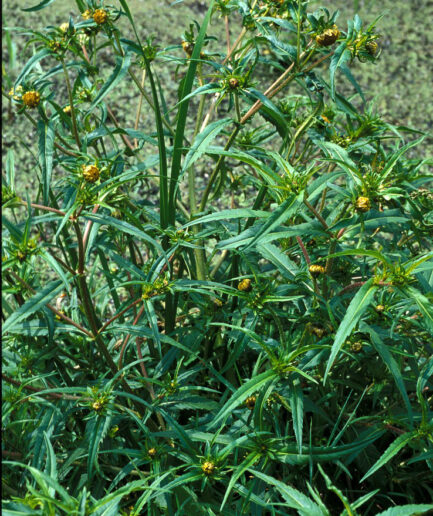Tansy
Scientific name: Tanacetum vulgare L.
Family: Asteraceae
MORPHOLOGY
Habit and Size: Perennial herbaceous plant, 60 to 120 cm in height, strongly aromatic, with a creeping and branched, woody rhizome.
Stem: Erect, leafy, striated stems, branched at the upper part.
Leaves: Leaves with petioles 5-15 cm long, alternate, glabrous, with 15-23 pinnately divided segments, serrated edges; cauline leaves sheathing the stem with small glands on the underside.
Flowers: Inflorescences are dense, compact terminal corymbs with all tubular flowers of a golden-yellow color, about 1 cm in diameter, disc-shaped, and long-pedunculated. Peripheral florets around the inflorescence margin are female with a tridentate corolla, while the central ones are hermaphroditic with a 5-toothed corolla. Blooms from June to October.
Fruits and Seeds: The fruits are achenes about 2 mm long with 4-5 longitudinal ribs, dotted with glands. Pappus with a small, irregularly grooved crown.
DISTRIBUTION AND HABITAT
Present throughout Italy except Sardinia, Basilicata, and Puglia, along ditches, fallow land, riverbanks, and meadows, from 0 to 1,600 m.
USE
Used in folk medicine as an infusion for scanty menstruation, the powdered flowering tops are indicated to eliminate pinworms. Due to the high toxicity of thujone, an essential oil found in high quantities in tansy, the therapeutic use of this herb has been completely abandoned. It was widely used by farmers, who would macerate small quantities in grappa for its bitter tonic, digestive, antipyretic, and anti-inflammatory properties, or to flavor wine to be drunk before meals to combat anorexia and gastric and intestinal spasms. Before using any plant-based product (medicinal or non-medicinal) for therapeutic or similar purposes, it is always advisable to consult your doctor in advance.
INTERESTING FACTS
An extremely aromatic plant, with a significant content of essential oils such as camphor and borneol, it was commonly used to perfume rooms and linen, as an insecticide to eliminate or repel lice, fleas, and moths from mattresses or sacks and the kennels of domestic animals, and as a repellent to keep mice away from grain stores. In the Middle Ages, the leaves were used as aromatic herbs in cooking for preparing dishes with eggs or meat and as a substitute for expensive spices. Today, the strong aromatic and pungent taste of tansy would be excessive for our now more refined palates.
Photos: freely licensed from Saxifraga and Ed Stikvoort, Rutger Barendse























